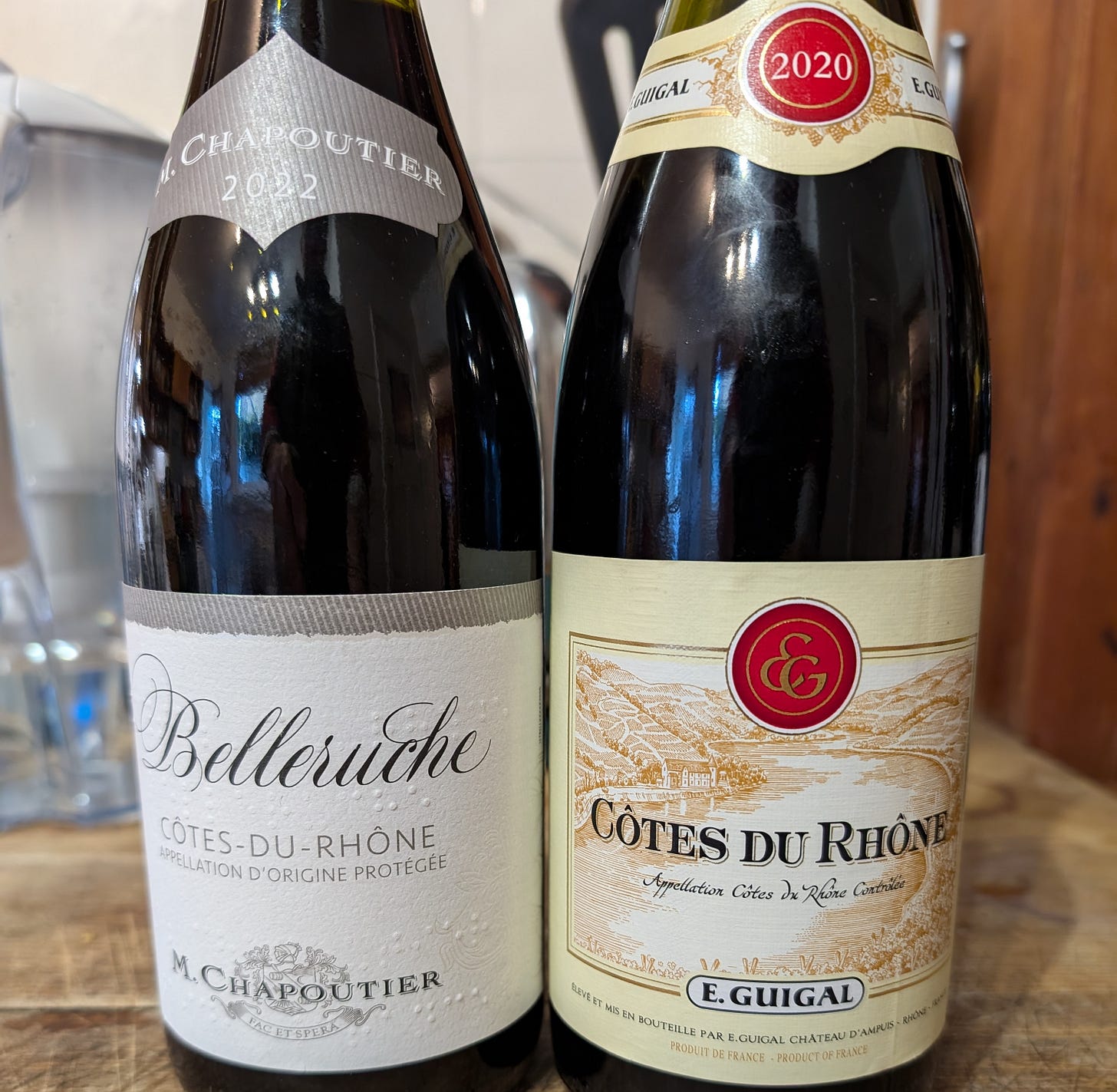Wine(s) of the Week: Côtes du Rhône challenge
It’s Guigal vs Chapoutier in the battle of the Rhône. But who will be the winner?
As a student I once got into a drunken argument with someone about who made the best Côtes du Rhône, Guigal or Chapoutier (it was in the bar of University College, Oxford, I was visiting.) I knew very little about wine at the time, in fact I had never tried the Guigal, I was just being a wine hipster, before the term even existed.
The trouble was that Guigal was just too familiar and let’s face it the label is a bit rubbish. When I worked at Oddbins we never touched the Moët, the Jacob’s Creek or the Campo Viejo; we even used to be snobbish about which lager we drank after work insisting that Superbok was vastly superior to Beck’s (which of course it is). Guigal’s Côtes du Rhone was just such a wine. I don’t remember any fellow Oddbinites drinking it or recommending it to customers.
Since then, however, the Guigal has become a firm favourite of mine. It’s one of the best value wines in existence produced by one of the most lauded names in the Rhone, Marcel Guigal, a hero to most though not of course to Kermit Lynch who describes Guigal’s heavily oaked Côte-Rôties as ‘freak wines.’
These single vineyard wines cost ££££ but there is another side to his business producing blends from bought-in wines. The Côtes du Rhône is his cheapest and it is produced in vast quantities: over 3.5 million bottles a year. Made from grenache, syrah and mourvèdre, it’s a masterpiece of the blender’s art with Guigal buying from dozens of growers across the Southern Rhone. Unusually for a mass market wine, it’s also matured for at least 18 months before release.
I’ve been reading a book called Angel’s Visits: an inquiry into the mystery of Zinfandel (published in 1991) by David Darlington which gives me some insight into the skills required to make a high quality large volume blend. This is Joel Peterson from Ravenswood saying how he made his mass market Vintners Blend (which I seem to recall used to be very good though nowadays Peterson has nothing to do with the brand):
“Every now and then you come across a good one [sample], but you have to go through fifteen bad ones to find it. Sometimes the defects are small enough that you can bury them in the blend; you use the positive attributes of some to blend out the negative characteristics of others. For example, a wine that’s high in acid but has nice oak would brighten up other wines that are low-to-medium acid but very flavorful and ripe. So samples that might not work as individual wines might still work in the blend. You just have to careful no to blend in a major defect.”
However Guigal blends his, he clearly knows what he is doing. I tasted the 2020 and it’s astonishingly rich and complex for the money with a maturity to it you just don’t see in wines of this price. It’s full of deep dark berry fruit. If you love a beefy Southern Rhone then you’ll love this. Here’s my full tasting note:
“Maraschino cherry, really spicy, cinnamon, liquorice on the nose.
Full body, chocolate, cooked strawberry, fine tannins, a bit boozy,
Spicy leathery finish with sweet spices”
I tried it next to its old rival Belleruche 2022 from Chapoutier, another one of the great negociant houses of the Rhone. They could not be more different in style, the Belleruche is a pale red, very fresh and floral. I wrote:
“In a lighter style than most CDR, raspberry fruit, fresh acidity, touch of orange peel, strong streak of thyme but with some quite firm finely grained tannins.
Good stuff. Might even be nice a little chilled.”
So the big question is: who is the winner Chapoutier or Guigal? Drum roll, please…
Keep reading with a 7-day free trial
Subscribe to Drinking Culture to keep reading this post and get 7 days of free access to the full post archives.




